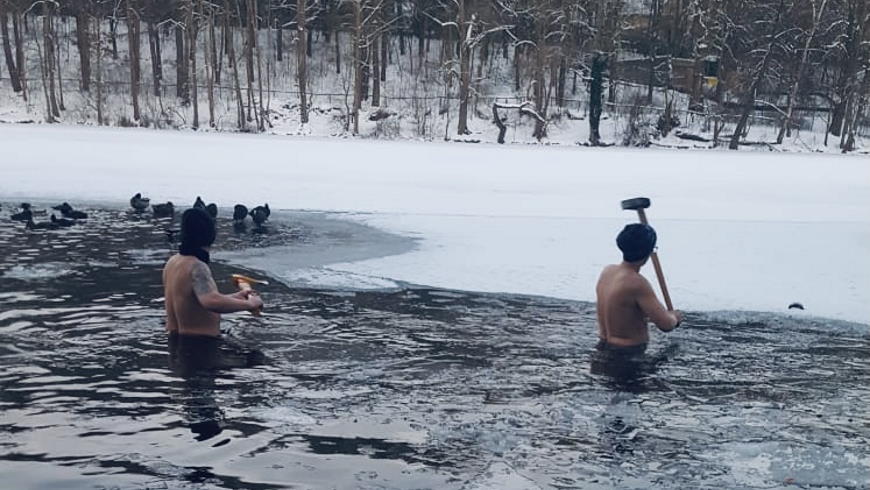It is a small, committed neighborhood between Hubertussee and Krumme Lanke, which is committed to bank protection, nature conservation and bird protection. All walkers and hikers have an eye on the natural environment and know every swan “almost personally”.
The freezing polar cold alarmed them, because a lone swan lives in the Krumme Lanke, unable to fly and threatened by a pathetic death by frost.
He has gull wings, a presumably innate trait that makes him unable to fly.
Actually, you don’t have to worry, because ducks and swans only have cold feet in winter.
Waterfowl with cold feet
Swans and ducks usually get along well in winter and are by no means to be regretted because of their cold feet.
Nature has devised a network of finely branched veins for these water birds, called “Rete tibio-tarsale”. The blood that flows into the feet gives off heat to the blood flowing back. The feet are well supplied with blood – but with relatively cold blood – which is why hardly any heat is lost and the ice under the feet does not melt away. This keeps your feet cold and valuable energy is saved.
However, there is a real risk of freezing and freezing. Above all, when there is prolonged frost, water birds need open water areas to forage. Sick or injured and immobile animals could freeze and die in the ice.
Swan rescuers in action
The first deployment took place on Wednesday, February 10, 2021:
Two brave ice bathers came in the afternoon, armed with axes, to enlarge one last area of open water.
The ice surface, which quickly freezes over, was crushed from the edges, up to 10 cm thick ice floes were broken out – applied animal welfare aid for a flightless swan.
The open water surface could be enlarged, but due to the hard frost it should only last for three days.
The action was therefore repeated on Saturday. A resident of Hubertussee helped. She was there with boots and sailing gear, and was able to break ice floes with a rope and weights to bring her to the bank.
This time a small fishing boat was also used, because in deeper water it was too dangerous to step into the cold water.
On the bank, other helpers steered the swan by being fed and saved it from unnecessary excitement when defending the area.

The lonely swan
The flightless swan, a male, also has a partner. But she flew on with a whole group of swans from the Krumme Lanke into the open waters of the Havel.
She’ll definitely come back in the spring, as usual.
The lonely swan has remained true to its location since it was first hatched – and spends its entire life on the Krumme Lanke.
In winter, the swan has to be fed and has become almost tame in contact with people.
Relocating it to other waters would be questionable because other swans would drive it out of their territories.
So it is now a small symbiosis with a nature loving neighborhood of swan rescuers and hikers who feed him through the winter and help him survive.
But the “four-legged enemies” come with them to the shore and onto the ice: They are free-roaming dogs that discover their hunting instincts here and are let off the leash contrary to nature conservation requirements.
Even the lone swan has already been attacked and needs a large open water surface in order to be able to escape the aggressive four-legged friends of Berlin’s dog lovers.
Even the swan “Ivory” from the Hubertussee, lovingly named by local residents, had to regret a visit to the Krumme Lanke with blood. A dog had injured his wing. He was just able to escape and flew back to the Hubertussee.

– .


